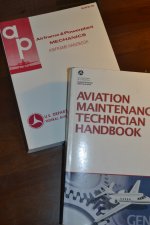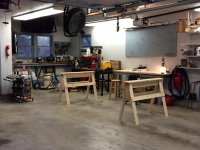ceslaw
Registered User
Order Placed
Time for introductions as my son, Ryan, and I embark on a new project. This is my first post, although I have been hanging around the site for a while. After contemplating building an airplane for some time, test flights, and many hours researching and exploring options, we have decided to build a Carbon Cub EX.
During one of my most recent of countless visits to the Carbon Cub website I chanced upon the November 15, 2013 bulletin summarizing the 2014 updates and improvements. Among them was the following:
“CubCrafters has added a new kick-panel at the front of the cabin providing a cup/bottle holder for the pilot.”
This upgrade was the clincher. The next day I called Chris Cater, Great Lakes Cubs, Cadillac MI, and confronted him with a long list of questions, including whether the cup holder was rated for spins and rolls (it’s not). The order was placed the next day.
I look forward to the Cub EX landing in its 18 foot crate at my door step around March 1, 2014.
The next three months: so much to learn, so little time.

Time for introductions as my son, Ryan, and I embark on a new project. This is my first post, although I have been hanging around the site for a while. After contemplating building an airplane for some time, test flights, and many hours researching and exploring options, we have decided to build a Carbon Cub EX.
During one of my most recent of countless visits to the Carbon Cub website I chanced upon the November 15, 2013 bulletin summarizing the 2014 updates and improvements. Among them was the following:
“CubCrafters has added a new kick-panel at the front of the cabin providing a cup/bottle holder for the pilot.”
This upgrade was the clincher. The next day I called Chris Cater, Great Lakes Cubs, Cadillac MI, and confronted him with a long list of questions, including whether the cup holder was rated for spins and rolls (it’s not). The order was placed the next day.
I look forward to the Cub EX landing in its 18 foot crate at my door step around March 1, 2014.
The next three months: so much to learn, so little time.














